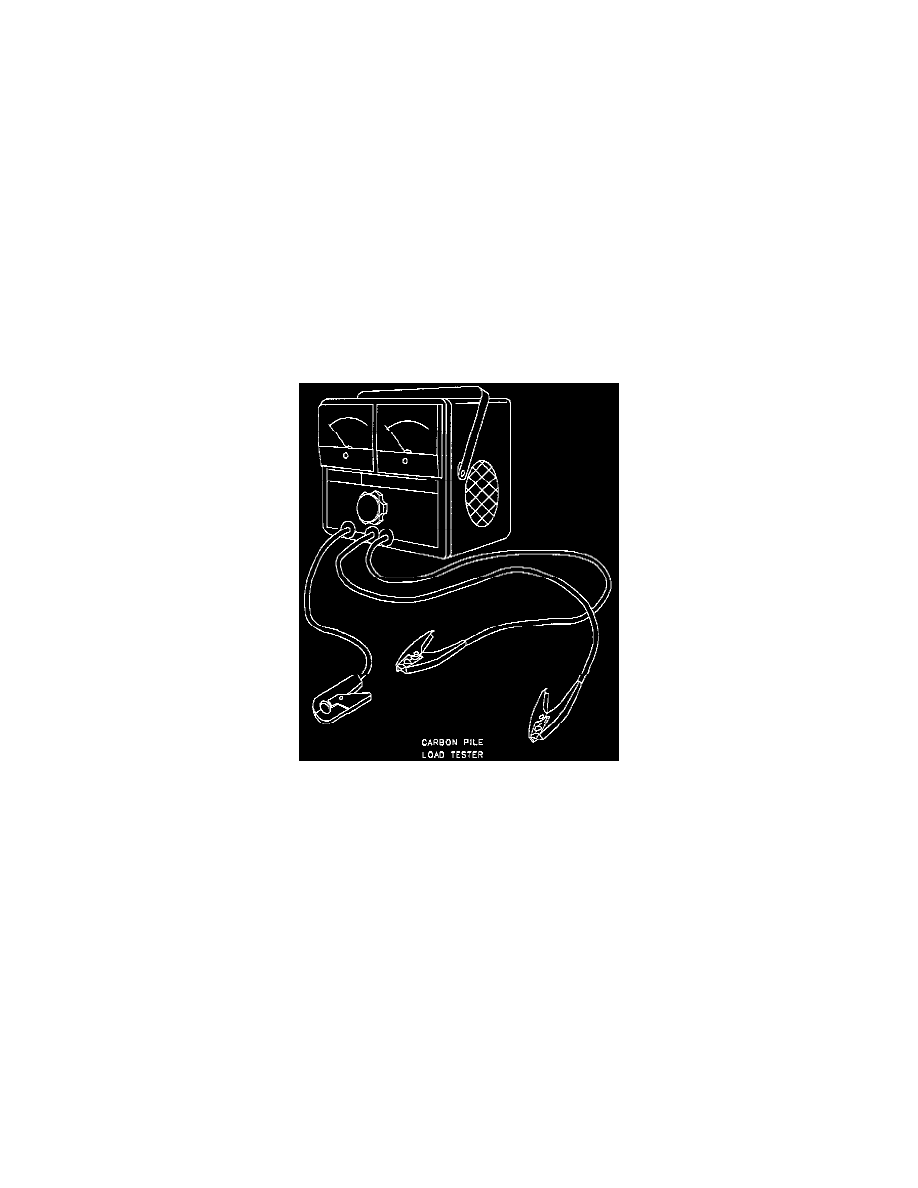Wagon L4-1.9L DOHC VIN 7 (1994)

Alternator: Component Tests and General Diagnostics
Alternator Testing
NOTE: Electronic system tester tool No. SA9154Z, or equivalent, is required for the following starter system test.
1. Clean battery terminals and attach electronic system tester clamps to appropriate terminals.
2. Clamp current probe to wire leading to battery ground terminal. Arrow on probe should point toward battery.
3. Press Charging System Test. The display should show the correct number of cylinders.
4. Run engine at 2000 RPM until display flashes "Maintain 2000 RPM".
5. Hold at 2000 RPM until counter counts down from ten seconds.
6. When ten seconds are over, run engine at idle until display reads Maintain Idle. Hold this momentarily until the display reads Test Complete.
7. Press "Continue" to see results. The Electronic System Tester will display voltage and current output of the alternator as follows:
a. Voltage output should be above 13 volts.
b. Current output should be a minimum of 60 amps.
8. If alternator does not meet specifications, proceed as follows:
a. Verify battery is charged sufficiently and ensure electrical system is not excessively loaded.
b If battery has sufficient charge, electrical loads are not excessive and alternator performance is still not as specified, replace alternator.
c. Repeat test to verify alternator is functioning properly.
Carbon Pile Load Alternator Test
Carbon Pile Load Tester
CARBON PILE LOAD GENERATOR TEST
1. Verify the fusible link between the starter and generator is good. Also verify connections are tightened to specification and clean.
NOTE: If a fusible link is blown, don't just replace it. The most probable cause of a blown link is an internal generator failure. Verify that there is
no external arcing or shorting of fusible link with other wires and/or components. If no problems are found, replace generator.
2. Install the carbon pile load tester and voltmeter across the battery terminals and the clamp-on ammeter to one of the battery cables.
3. Start the engine and raise the engine speed to 2000 RPM.
4. With the engine at 2000 RPM, observe the voltmeter.
5. If the voltage is uncontrolled or exceeds 16 volts, the generator is bad.
6. If the voltage is below 16 volts, turn on the carbon pile load tester.
7. While maintaining 2000 RPM, adjust the tester to obtain a maximum current reading on the ammeter; do not allow the voltage to fall below 13
volts.
8. If the output current is within 15 amps of the rated output, the generator is good.
NOTE: The battery must be fully charged and show a green indicator when performing this test.
